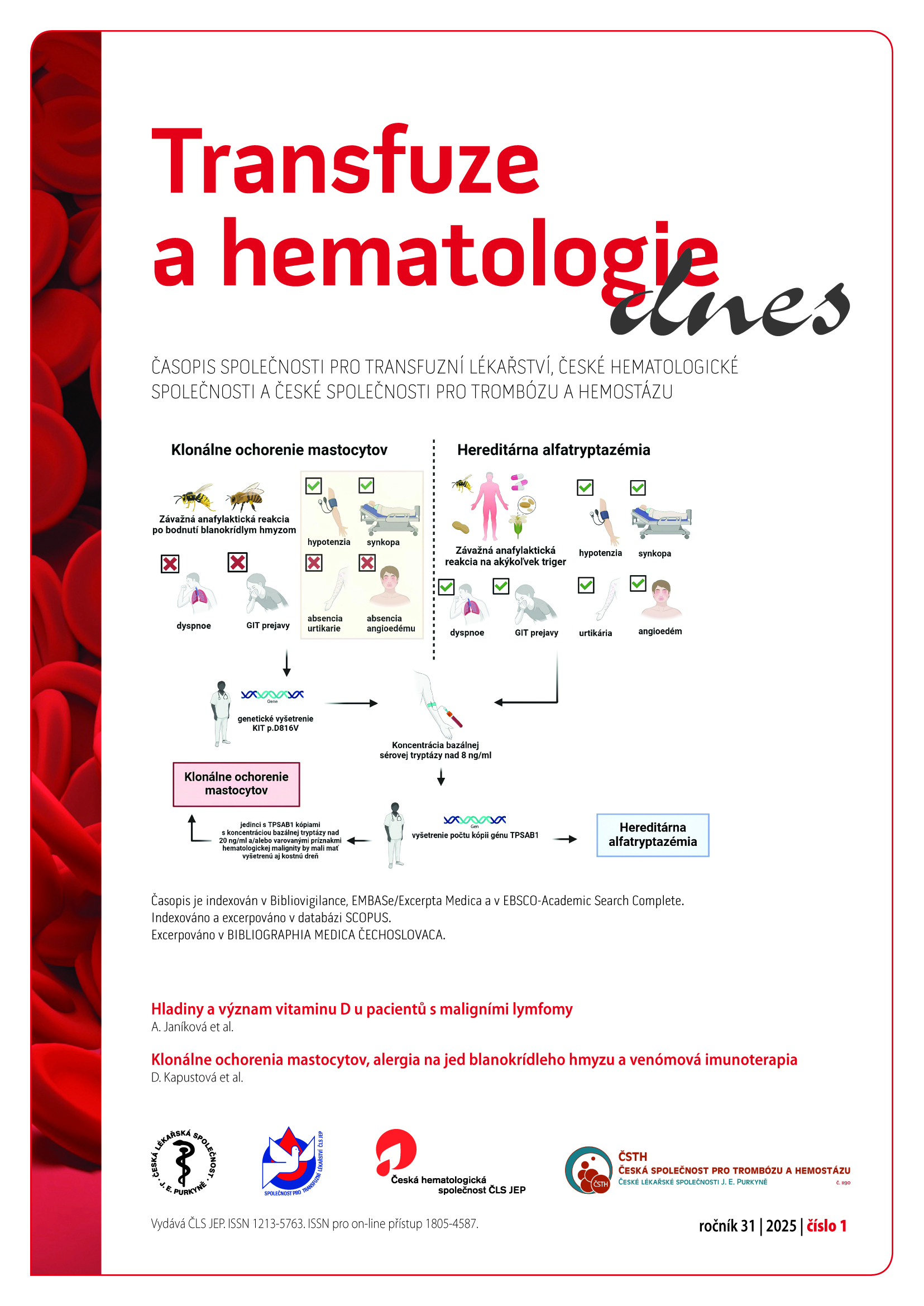Comparison of two methods for measuring free hemoglobin in the supernatant of erythrocyte blood components
Keywords:
Red cells – hemolysis – spectrophotometryAbstract
Background: The level of free hemoglobin (a marker of ongoing hemolysis) rises during the storage of erythrocyte transfusion components. The recommendation of the Council of Europe (Guide to the preparation, use and quality assurance of blood components, 21st Edition) and the Czech legislation (Regulation No. 143/2008 Coll.) define its maximum value at 0.8% of the erythrocyte mass at the end of the shelf life of the transfusion unit. Measuring the percentage of hemolysis is also recommended for blood components that are further treated, e.g. by washing.
The aim of the study was to compare two methods of measuring free hemoglobin in the supernatant of erythrocyte transfusion components by direct spectrophotometry and to find out the suitability of the Harboe method to determine the level of free hemoglobin in transfusion units.
Materials and methods: 20 units of erythrocyte transfusion components were included in the study. Samples of the supernatant were collected at the end of the expiration period and the free hemoglobin was measured by direct spectrophotometry by determining the absorbance of the sample at 540 nm according to Fortova (A) and by measuring the absorbance at wavelengths of 415 nm, 450 nm and 380 nm according to Harboe (B). The percentage of hemolysis of the erythrocyte mass was recalculated afterwards according to the volume and the hematocrit of the transfusion unit.
Results: The level of free hemoglobin at the end of the storage period did not exceed 0.8% of the erythrocyte mass in all units - an average of 0.31% (A) and 0.29% (B). No statistically significant difference was discovered between the two sets.
Conclusion: The method of measuring the absorbance at wavelengths of 415 nm, 450 nm and 380 nm according to Harboe corresponds to the commonly used method of measuring at 540 nm and is suitable for measuring the content of free hemoglobin in transfusion components.


